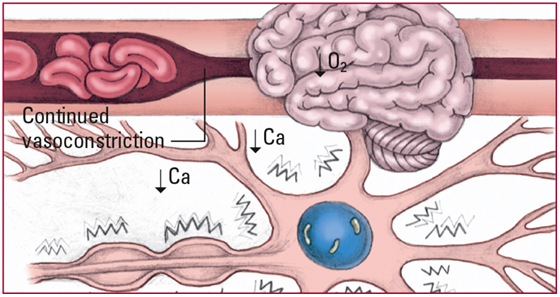This series of illustrations shows how respiratory alkalosis develops at the cellular level.
- When pulmonary ventilation increases above the amount needed to maintain normal carbon dioxide (CO2) levels, excessive amounts of CO2 are exhaled. Hypo capnia (a fall in PaCO2) leads to a reduction in carbonic acid (H2CO3) production, a loss of hydrogen ions (H+) and bicarbonate ions (HCO3-), and a subsequent rise in pH. Look for a pH above 7.45, a PaCO2 below 35 mm Hg, and an HCO3- below 22 mEq/L.

- In defense against the rising pH, H+ is pulled out of the cells and into the blood in exchange for potassium ions (K). The H+ entering the blood combines with HCO3- to form H2CO3, which lowers pH. Look for a further decrease in HCO3- levels, a fall in pH, and a fall in serum potassium levels (hypokalemia).
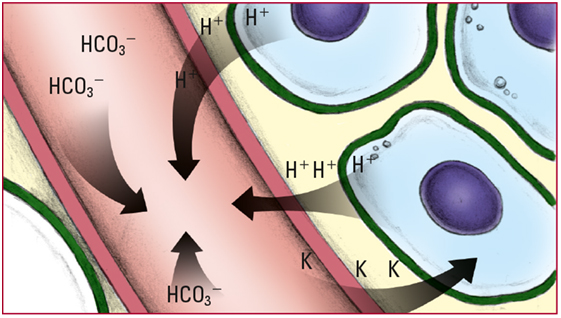
- Hypocapnia stimulates the carotid and aortic bodies and the medulla, which causes an increase in heart rate without an increase in blood pressure. Monitor for angina, electrocardiogram (ECG) changes, restlessness, and anxiety.
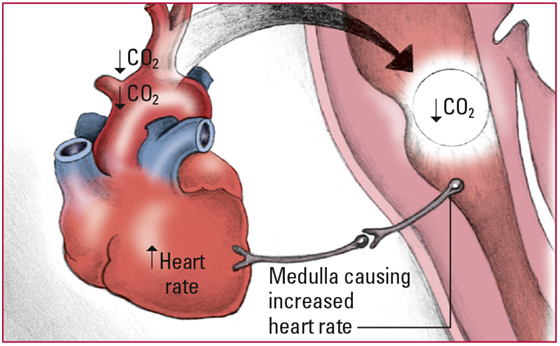
- Simultaneously, hypocapnia produces cerebral vasoconstriction, which prompts a reduction in cerebral blood flow. Hypocapnia also overexcites the medulla, pons, and other parts of the autonomic nervous system. Monitor for increasing anxiety, fear, diaphoresis, dyspnea, alternating periods of apnea and hyperventilation, dizziness, and tingling in the fingers or toes.
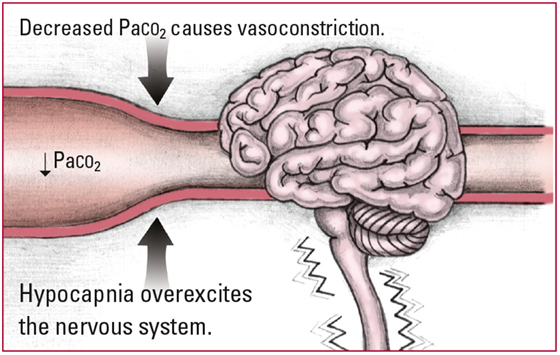
- When hypocapnia lasts more than 6 hours, the kidneys increase secretion of HCO3- and reduce excretion of H+. Periods of apnea may result if the pH remains high and the PaCO2 remains low. Look for slowed respiratory rate, hypoventilation, and Cheyne-Stokes respirations.
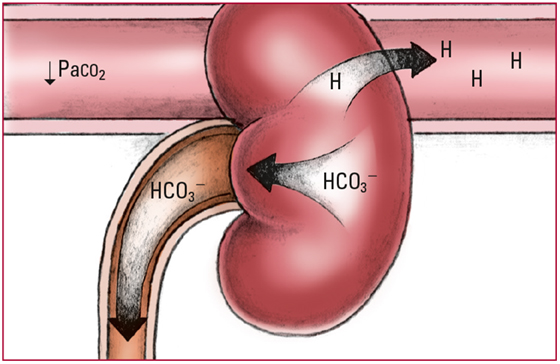
- Continued low PaCO2 increases cerebral and peripheral hypoxia from vasoconstriction. Severe alkalosis inhibits calcium (Ca) ionization, which in turn causes increased nerve excitability and muscle contractions. Eventually, the alkalosis overwhelms the CNS and the heart. Look for decreasing LOC, hyperreflexia, carpopedal spasm, tetany, arrhythmias, seizures, and coma.
